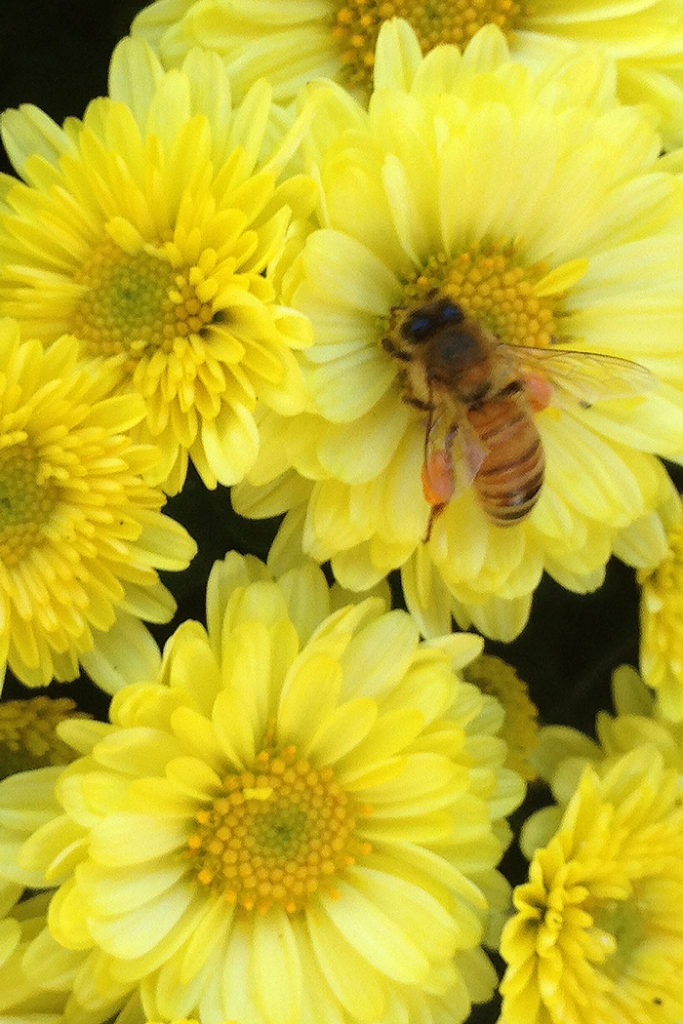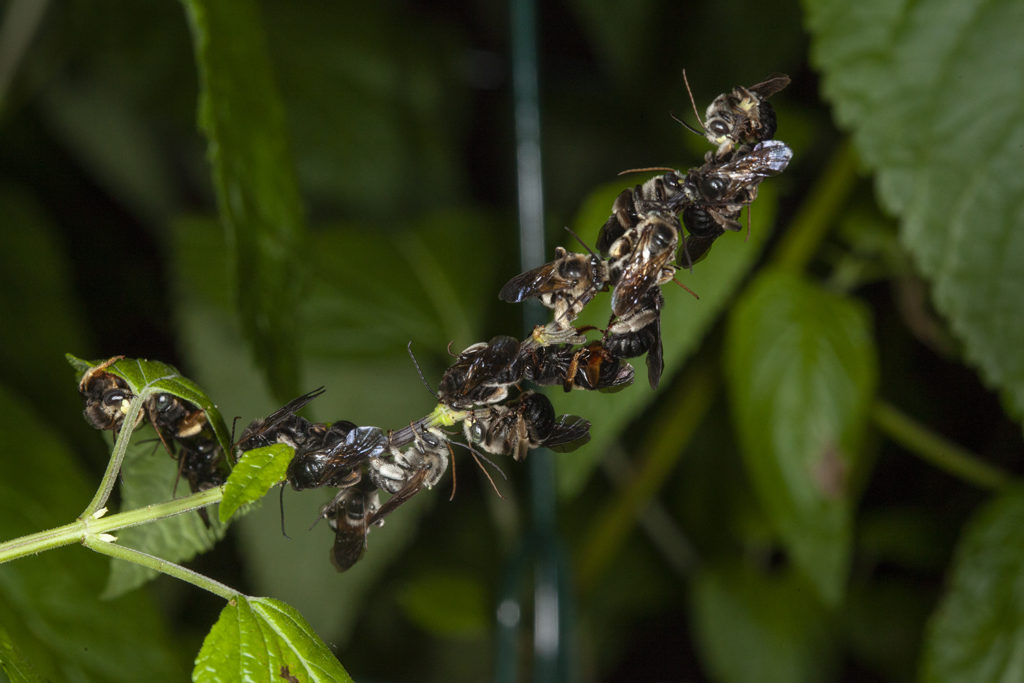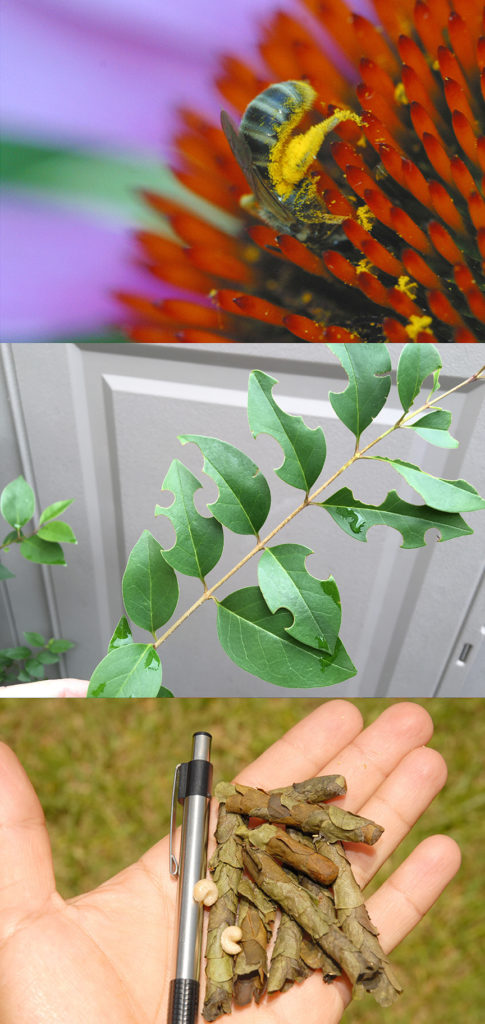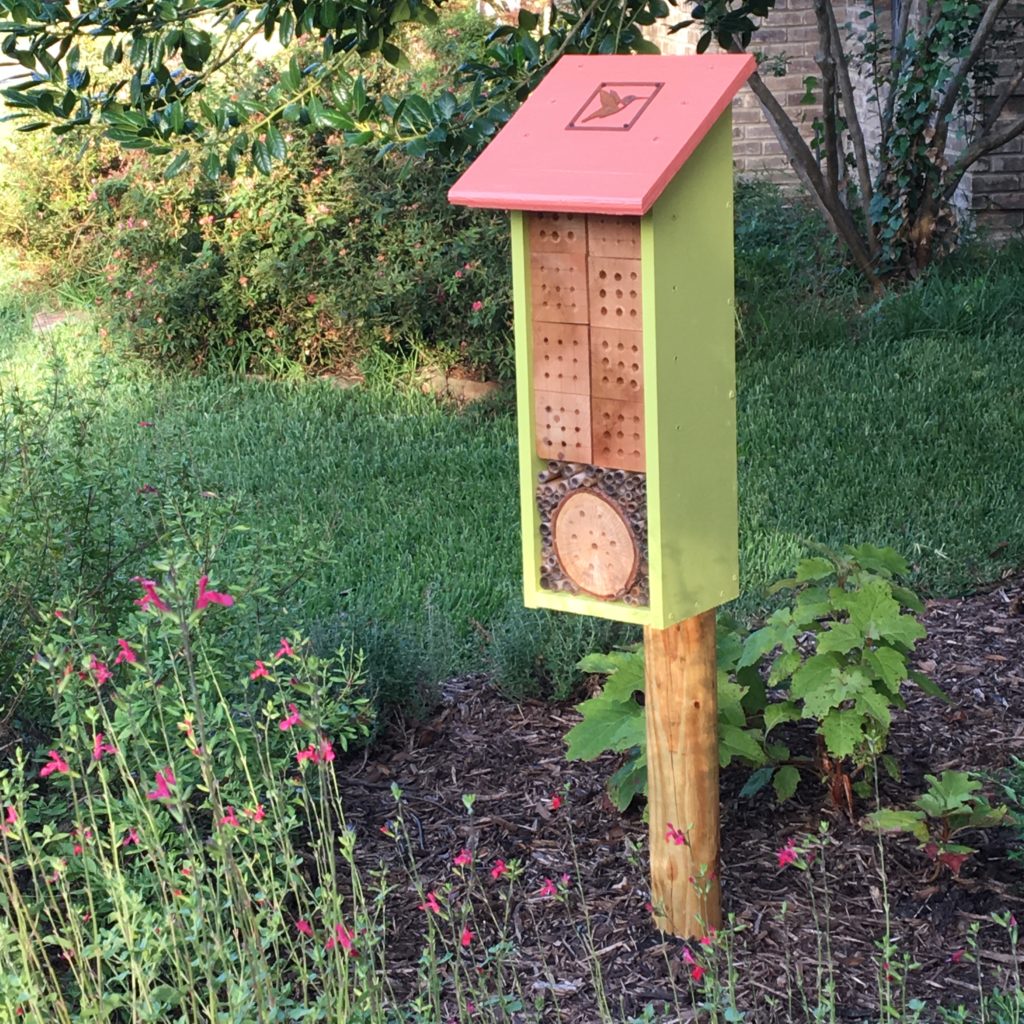
The European honey bee visiting this Aster is just one of thousands of different kinds of bees. Its relatively large size, with lots of good PR from the beekeeping industry, make it our most recognizable bee.
In my experience, most people like bees. Aside from the occasional bad encounter with a sting, most of us know that bees are good, and a necessary part of our spaceship-earth zoo.
Recently, we’ve heard about honey bee die-offs due to a variety of problems. These stories are almost always about domesticated European honey bees, not native and wild bees. These problems are largely cultural and have to do with sanitary bee management, not so much with ecological issues. Bees are important to agriculture and will be well taken care of in the long run.
But European honey bees are just one of 4,000 plus unique kinds of native bees found in the U.S. and Canada. Most of these other bees are not well-known, yet are (arguably) far more important to our natural ecosystems than honey bees. These are the ones we should worry about.

An all-male roost of long-horn bees, genus Melissodes, gets ready to settle down in my garden for a night’s rest. The plant is Salvia guaranitica ‘Black and Blue’
Native bees differ from honey bees in many ways. None of our natives are honey producers (unless you count the unpalatable dark nectar stored in wax cells by bumble bees). While honey bees make above-ground nests out of wax, few of other bees make wax, and 70% of them live in the ground. Only about 1% of bees, including the honey bees and bumble bees, are social. Most of the remaining species live alone (are solitary), with each female in charge of building and provisioning her own nest. Unlike the honey bees and bumble bees, these nonsocial bees do not attack and sting when their nest is disturbed; and their pollination skills are often equal, or superior, to the domestic honey bee.
As a gardener, my goal is to attract and sustain these native bees. To do this, a few years ago my wife and I began a pollinator garden–a site with bee-attractive plants that would remain in bloom from spring to fall. Now in our third year, we are seeing the fruits of our labors.
Last summer I was delighted to see long-horned bees (bee tribe Eucerini) in our garden. So named because of the male’s long antennae, they are similar in size to honey bees. The males of this tribe have an unusual–and charming–roosting behavior. While the female bees spend the night in underground burrows, male Eucerines gather together on the twigs of certain plants and sleep in groups of up to 20 or so. Last night, my wife pointed with concern to a suspicious black mass on the tips of one of her flowering salvias. A closer look showed the black mass to consist of a cluster of 18 bees.
To keep from falling off the plant at night these bees close their jaws around a suitable stem, lock in, and drift off to bee dreamland, or wherever sleeping bees go. Very cool.
Another native bee family is the leaf cutting bees (family Megachilidae). Leafcutters are common in Texas gardens. Look for their characteristic cuttings on rose leaves, photinia, ligustrum and other plants. Leaves are cut by female bees, and used to build a “nest”, actually a swaddling wrap for a small ball of pollen and a single bee egg. These leaf wraps are stuffed into hollow plant stems or other natural, or man-made, cavities. You can recognize leafcutter bees by the way they carry pollen on the undersides of their abdomens.
Leafcutter bees are one of the bees that will take advantage of artificial bee hotels. This summer I’ve been enjoying watching leaf cutter bees, and others I have yet to identify, taking advantage of the bee hotel I installed two summers ago. I estimate about 1/3 to 1/2 of the holes I drilled for bees have been occupied by bees at some time in the last two years. As a bonus this year, a Carolina wren took refuge in a gap I left at the top of my bee house!

Megachilid (leaf cutter) bees carry pollen on special hairs on the undersides of their bodies (top). Once you know what to look for it’s common to see the cutting activities of megachilids (middle). Leafcutter bee nests consist of the cut leaves wrapped around pollen and an egg (or larva) and stuffed in a hollow twig or other convenient hole.
Despite an unforgettable sting early in life, I’ve always liked bumble bees. For me, bumble bees are one of the main attractions of a garden, adding sound, motion and color to the landscape. The scientific name for bumble bees, Bombus, comes from a Greek word meaning “buzzing sound.” Only about 50 species of bumble bee occur in North America, and of all the native bees, these may be the most vulnerable. Some scientists fear that that in addition to loss of habitat due to urbanization, some bumble bees may not be able to adapt to warming climates. Gardeners can, however help on the habitat end. In cities good nesting sites (underground animal burrows, piles of leaf litter, etc.), are rare. But bumble bee houses can remedy that to some extent. My project for next year is to install several potential bumble bee nest pots in corners around the yard. It may take awhile to attract bumble bees, but I’m patient.
I’m glad we built a garden for the “other bees.” Every night I find different bees to identify, butterflies and a variety of insect life, some of which makes good food for my new wren friends. It’s certainly made me want to get out more in the garden.
If you want to learn more about bees in your backyard, check out the excellent book, The Bees in Your Backyard, by Joseph Wilson and Olivia Messinger Carril. They provide an excellent photo guide to all the bee families, and instructions for studying and attracting bees to your yard.
